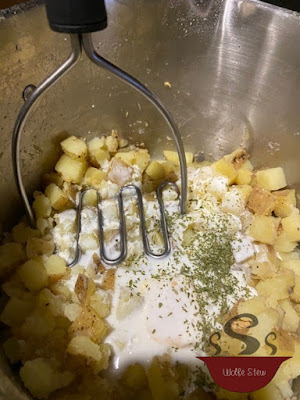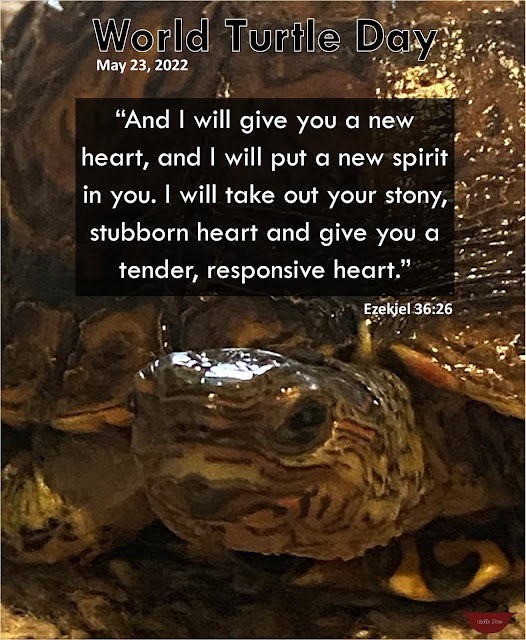If you've been around the Wolfe Stew for long, you know we love potatoes. We've even challenged you with ten potato facts in this post. And, as a bonus, share with you a quick and easy way to enjoy this nutritionally controversial vegetable.
Today, we continue sharing our love of potatoes by letting you in on some secret steps we learned regarding the making of mashed potatoes. And, we'd love you to share your secrets, too - if you're willing that is. Just comment at the end of this post with your top mashed potato making secrets. Or, if you only want to share with us, shoot us an email: mr@wolfestew.com or mrs@wolfestew.com.
Mashed potatoes: comforting, versatile, and creamy, yet deceivingly simple to make. I say this from experience. As a new teacher and newly wed, my first mashed potatoes recipe resided on the back of an Idahoan potato pouch. (View Idahoan products, if you'd like) They are consistently good, quick to make, come in many varieties, and conducive to customization. In fact, to be perfectly honest, we still stock Idahoan potatoes in our pantry. It's a no-fail, quick-to-make, loved-by-everyone side; so, why wouldn't we? But, when I have the time, I still opt to make mashed potatoes the old fashioned way: from a potato.
However, learning to make them the old fashioned way was a struggle. Part of my transition from teacher to housewife included efforts to cook from scratch instead of by convenience. Two of my biggest struggles were things I thought would be easy: mashed potatoes and rice. I know, silly, naive me. Mashed potatoes and rice. As both are staple sides, I assumed they surely would be easy to make. Quickly, I learned that even staple sides require tricks best learned through experience. My first attempt at homemade mashed potatoes resulted in potato glue and my first attempt at rice: rice pebbles.
Allow me to save you some struggle. Now, quick disclaimer, this is NOT a guarantee that should you follow my secret steps of mashed potatoes you'll get perfect results. No. While my steps may help you on your way, you need to fine-tune the steps to make them your own - which only comes from experience. Besides which, I cannot even tell you how many times I've watched my mom make her potato salad and still can't get mine to taste like hers. Or, how often I make the same recipe several times and still botch it. So, the first (and likely most important) secret step of mashed potatoes is this:
Be patient with yourself. Allow yourself to fail. Keep trying anyway. Seek advice of others, but find your own way.
I mean, really, that's just good life advice.
And now...
My Secret Steps of Mashed Potatoes
1. Use Gold Potatoes
The texture and flavor of these are simply the best for mashed potatoes. To be honest, they are our go-to potato.
2. Count and Clean the Potatoes
Select one potato for every person and one for the pot. So, if you're feeding three, select four potatoes. If you're feeding one, select two. Then, run the potatoes under running water and give their skin a good scrubbing to remove excess dirt. Or, if preferred, peel the potatoes then rinse them off. I make my mashed potatoes with the skin on so I don't lose
the fiber of the potato peel in the end product (Check out
Potato Goodness for more
potato nutrition information.)
3. Dice the Potatoes
Dicing potatoes shortens the cooking time. I dice mine by cutting the rounded ends off lengthwise. Then, I cut the middle into sections, trying to maintain consistent widths (about a centimeter). Next, stack the middles (because they are flat and won't wobble) and cut to make cubes. Cut the rounded edges individually with the flat side touching the cutting board. I always try to make a flat end whenever I cut for stability, which helps with making more consistent cuts.
4. Prepare for Boiling
Dump the potatoes in a pot and cover with water. Add salt. I use about a teaspoon, but it really is to your liking. Then, set the water to boil by turning the burner to high.
Why add the salt? It adds a little bit of flavor as the potato is cooking. One thing the Mr. repeatedly told me during my potato preparation learning process is: "You can't really over-season or overcook a potato." Which, while not completely accurate, did lessen my cautiousness in seasoning and helped me lengthen my expectation of potato cooking times.
These days, I actually do these steps in the reverse order. I fill the pot with water, add salt, set it to boil, then add the potatoes after they are diced. Usually, I'm adding the potatoes before the water is boiling. The two disadvantages to this method are: 1) you may not add the right amount of water to the pot initially and 2) you might splash yourself with hot water while adding the potatoes. My solutions: 1) if you add your potatoes and there is not enough water, you can always add more by dumping in cupfuls of water until the potatoes are covered and 2) as you dump the potatoes into the water, use your cutting board as a buffer (keep the cutting board between you and the pot of boiling water).
5. Boiling Time
Next you wait. You can watch it if you want, but you know how the saying goes: "A watched pot never boils." Instead, I move on to preparing the other parts of my meal. Or, if that isn't necessary, cleaning up the kitchen. When you think the potatoes are done, you test them with a fork. Use a spoon to remove a potato. Then, stab it with the fork. If the fork goes in easily and the potato slightly falls apart, the potatoes are finished. We call this stage: "fork tender."
If your potatoes are fork tender, drain the water, return the potatoes to the pot (but NOT on the hot burner) and continue to the next step. If not, continue boiling and checking the potatoes periodically until they are.
6. Add the Butter
For every potato, add a 1/2 Tablespoon of butter to the pot. So, if you have four potatoes, you'd add 2 Tablespoons of butter. Return the pot to the still warm (but turned off) burner and stir the potatoes around so the butter can melt.
7. Add Milk and Seasonings
For every two potatoes, add 1/4 cup of milk. So, for four potatoes, you'd add 1/2 cup of milk. Then, add in your seasonings. This can vary from cook to cook and even time to time. Generally, I add salt, pepper, garlic and parsley. Also, the type of milk I use varies. I tend to opt for creamier milks: buttermilk, heavy whipping cream or half and half, but, good old fashioned milk works, too.
8. Mash the Potatoes
Again, how you mash the potatoes depends on your desired end result. I like mine chunky and use a potato masher. If you like yours smooth, use a hand mixer. (Check out this article from
Taste of Home for more
potato mashing methods.)
9. Serve and Enjoy!
Top your potatoes how you like them. As a kid, we always had potatoes with gravy. The Mr. likes them with butter. And these days, I'm eating mine plain.
Now, it's your turn!
Before You Go, We'd Love to Know:
- What are your best potato mashing secrets?
- How do you serve your mashed potatoes?
With Love from the Kitchen,
Did this post leave you hungry for more? If so, you'll want to check out "
Our Kitchen." That's the room at Wolfe Stew where we serve ideas from Our Kitchen and ask you to share ideas from yours.









Comments
Post a Comment
Thank you for adding your flavor to the stew.